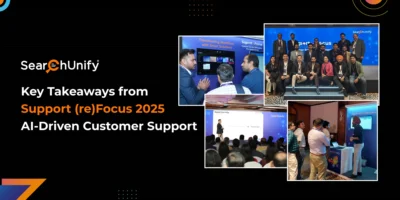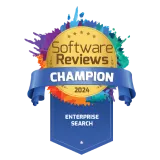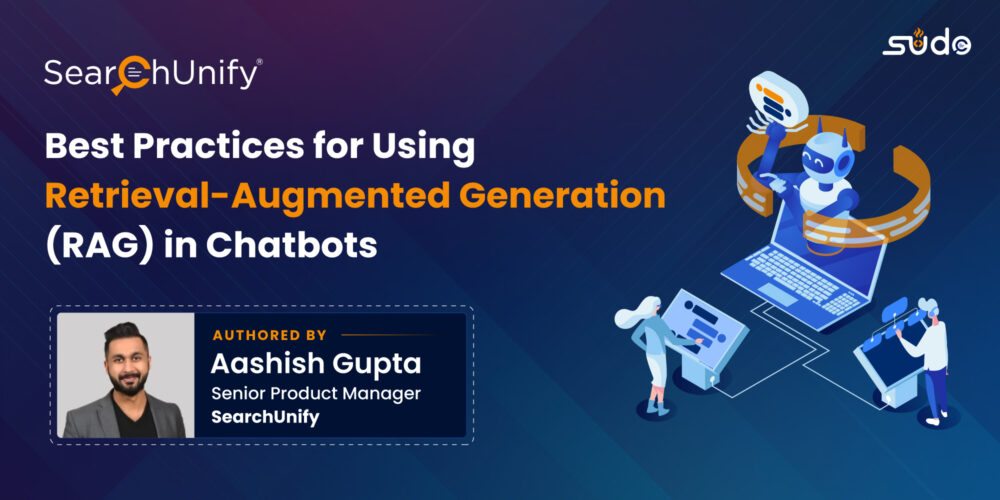
Remember those early chatbots that felt like talking to a brick wall?
Us too.
But times have changed, and so have chatbots. Enter Retrieval-Augmented Generation (RAG), the secret sauce that’s transforming these digital assistants into knowledge powerhouses. With RAG, chatbots are becoming increasingly sophisticated, capable of handling complex customer inquiries and providing personalized assistance.
Let’s dive into the world of RAG and discover how chatbots are not just helpful, but downright impressive. After all, we all want to achieve full chatbot potential for our businesses.
Retrieval-Augmented Generation (RAG) is an advanced technique that enhances chatbot capabilities by combining the power of retrieval and generation models. This approach allows chatbots to provide accurate, context-aware responses by retrieving relevant information from large datasets and generating coherent answers. Implementing RAG in chatbots can significantly improve user interactions and satisfaction. The integration of RAG based chatbots into various industries has revolutionized customer service and engagement.
Here’s a guide to the best practices for using RAG effectively in chatbot systems.
1. Understand the RAG Architecture
Before implementing RAG, it’s essential to grasp its two main components:
- Retrieval Model: This component searches a large corpus of documents or knowledge base to find relevant information based on user queries. It helps narrow down the context and scope of the response.
- Generation Model: This component uses the retrieved information to generate a coherent and contextually appropriate response. It refines the answer by leveraging advanced language models.
Understanding these components helps in optimizing how they interact and ensure that the retrieved information aligns well with the generated response.
2. Curate a High-Quality Knowledge Base
The effectiveness of the retrieval component in RAG relies on the quality of the knowledge base:
- Comprehensive and Up-to-Date Content: Ensure the knowledge base includes a broad range of topics relevant to your users and is regularly updated to reflect the latest information.
- Structured and Indexed Data: Organize the knowledge base in a structured manner and index the content effectively to facilitate quick retrieval. Use metadata and tagging to enhance search efficiency.
- User Feedback Integration: Regularly incorporate user feedback to refine and expand the knowledge base. Address gaps and update information based on common queries and emerging trends.
3. Optimize Retrieval Mechanisms
Efficient retrieval is crucial for the effectiveness of RAG-based chatbots:
- Use Advanced Search Techniques: Implement search algorithms that can handle semantic search, synonyms, and context-aware queries to improve retrieval accuracy.
- Leverage Pre-trained Models: Utilize pre-trained models for retrieval tasks to enhance the search process and reduce the need for extensive training from scratch.
- Fine-Tune Retrieval Models: Customize retrieval models to align with your specific domain and user needs. Fine-tuning helps improve relevance and precision in retrieving information.
4. Enhance Generation Quality
The generation component must produce coherent and relevant responses:
- Train on Domain-Specific Data: Ensure that the generation model is trained on domain-specific data to improve the relevance and accuracy of generated responses.
- Implement Response Filtering: Use filters and quality checks to ensure that generated responses are appropriate, accurate, and aligned with user expectations.
- Incorporate Contextual Understanding: Enhance the generation model’s ability to understand and maintain context throughout the conversation to provide more meaningful and relevant responses.
5. Ensure Seamless Integration
The integration of retrieval and generation components should be smooth:
- Define Clear Interaction Protocols: Establish clear protocols for how the retrieval and generation models interact. Ensure that the data retrieved is effectively utilized by the generation model to craft responses.
- Optimize Performance: Continuously monitor and optimize the performance of both components to ensure that they work together efficiently and deliver timely responses.
- Implement Feedback Loops: Create mechanisms for continuous learning and improvement based on user interactions and feedback. Use this feedback to refine both retrieval and generation processes.
6. Prioritize Security and Privacy
Handling user data responsibly is critical:
- Secure Data Access: Ensure that access to the knowledge base and user data is secure. Implement encryption and access controls to protect sensitive information.
- Compliance with Regulations: Adhere to relevant data protection regulations and standards, such as GDPR, to ensure that user data is managed responsibly.
- Transparency with Users: Inform users about how their data is used and ensure that they have control over their information.
7. Continuously Evaluate and Improve
Regular evaluation and improvement are key to maintaining high-quality interactions:
- Monitor Performance Metrics: Track metrics such as response accuracy, user satisfaction, and retrieval efficiency to gauge the effectiveness of your RAG implementation.
- Conduct A/B Testing: Use A/B testing to compare different configurations and approaches. This helps identify the best strategies for optimizing retrieval and generation.
- Adapt to Evolving Needs: Stay updated with advancements in RAG technology and adapt your chatbot systems to leverage new features and improvements.
Many organizations are grappling with the decision of whether to build their RAG-powered chatbots in-house or opt for a pre-built solution. While the former approach offers greater control and customization, it also demands significant time, resources, and expertise. Developing and maintaining a RAG chatbot from scratch can be a substantial undertaking, especially for smaller businesses or those without a dedicated data science team.
On the other hand, pre-built RAG solutions can offer a more efficient and cost-effective path to implementation. These solutions often come with pre-trained models, pre-configured components, and built-in security measures, reducing the time and effort required for development.
However, the challenge lies in finding a solution that meets all the specific needs of an organization, including expertise in security concerns, data leakage, privacy issues, customer support, case deflections, customization, smart analytics, advanced search algorithms, and deep CRM integration to manage the entire customer lifecycle.
While implementing RAG can be technically challenging, leveraging a pre-built solution like SUVA can significantly simplify the process. SUVA’s advanced features and seamless CRM integration offer a comprehensive solution for organizations seeking to harness the power of RAG without the heavy lifting.
Here’s more on SUVA
SUVA (One-Stop Solution): An LLM-Powered FRAG Chatbot with Seamless CRM Integration
SUVA is an advanced self-service chatbot that harnesses the power of Large Language Models (LLMs) combined with the FRAG (Federated Retrieval-Augmented Generation) approach. SUVA’s native integration with various CRM systems revolutionizes customer support by offering:
Enhanced Accuracy and Relevance
SUVA’s LLM capabilities and FRAG approach go beyond simple keyword matching. We analyze over 20 attributes—including customer history, similar cases, past resolutions, and user persona—to fully understand and rephrase queries. SUVA also engages users with follow-up questions to clarify intent, ensuring that responses are contextually relevant and highly accurate. This sophisticated retrieval and generation process minimizes the risk of presenting irrelevant articles and delivers precise, tailored answers.
Did you know? Self-service chatbots can reduce query handling times by up to 50% and increase response accuracy by up to 30%, leading to more efficient customer support.
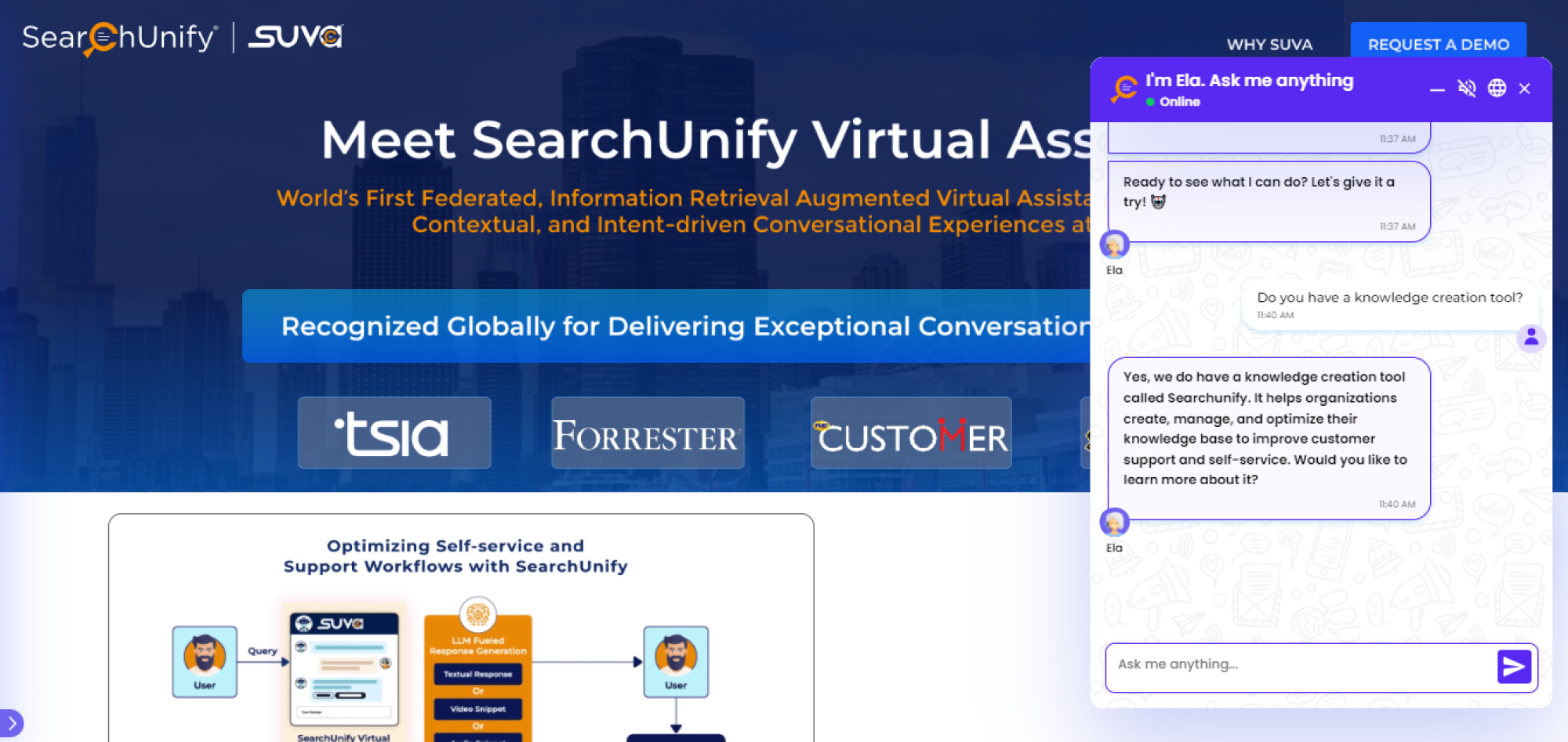
This is a non-RAG generated response.
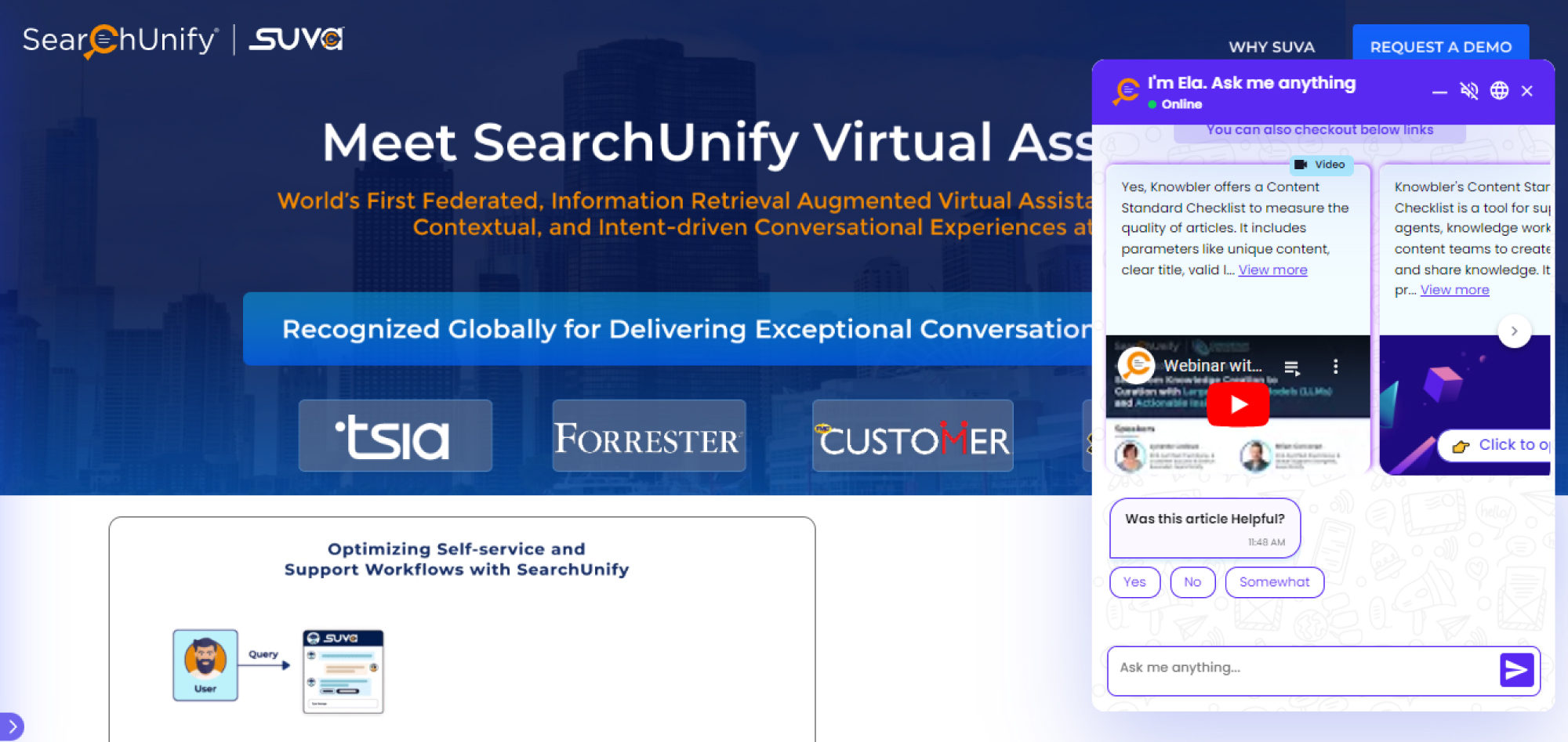
A federated RAG based generation.
Seamless CRM Integration
SUVA integrates effortlessly with all major CRM platforms, enabling smooth data flow and interaction management. This integration ensures that customer profiles, case histories, and support tickets are efficiently handled within your existing CRM infrastructure.
Did you know? Integrating LLM chatbots with CRM systems can lead to a 20-30% increase in operational efficiency by automating case management and reducing manual data entry.
Intelligent Response Generation
Leveraging advanced generation models, SUVA delivers coherent, contextually appropriate responses that enhance the user experience by addressing queries with precision and depth. We prioritize privacy by masking personally identifiable information (P2) before it interacts with our generation models. This ensures that customer and client privacy is preserved. The masked information is then embedded in the final response layer to maintain the integrity and relevance of the information while safeguarding sensitive data.
Did you know? Chatbots that use advanced response generation can improve customer satisfaction scores by up to 40%, as they provide more accurate and relevant answers.
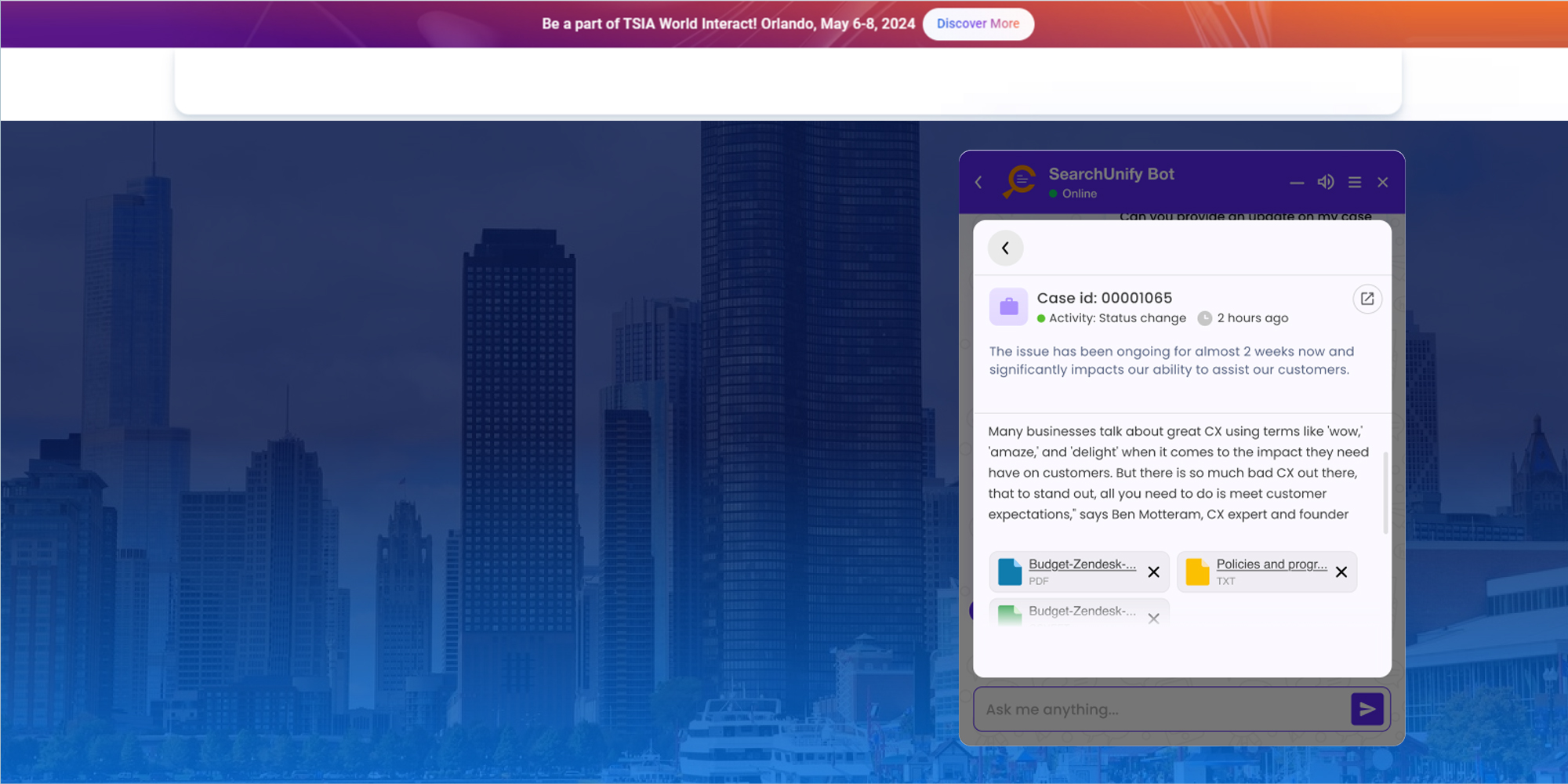
Adaptive Learning
SUVA continuously improves its performance through adaptive learning, refining its responses based on interaction data and user feedback to better meet evolving support needs.
Did you know? Chatbots with adaptive learning capabilities can achieve a 25% increase in first-contact resolution rates by learning from past interactions and continuously improving.
The Importance of Direct Case Management from Chatbots
Direct case management via chatbots is a crucial advancement in customer support for several reasons:
Efficiency and Speed
By enabling chatbots to directly create, update, and manage cases within the CRM, businesses can significantly reduce manual intervention, streamline workflows, and expedite case resolution.
Did you know? Chatbots that manage cases directly can reduce case resolution time by up to 40%, leading to faster response times and increased customer satisfaction.
Improved Accuracy
Automated case management minimizes the risk of human error and ensures that case details are accurately recorded and updated in real-time, leading to more effective issue tracking and resolution.
Did you know? Automated case management can improve data accuracy by up to 35%, reducing the likelihood of errors and ensuring more reliable case handling.
Enhanced Customer Experience
Direct case management through chatbots ensures that customers receive timely updates and can track the status of their cases effortlessly, leading to improved satisfaction and reduced wait times.
Did you know? Customers interacting with chatbots for case management experience up to 50% shorter wait times, resulting in higher satisfaction and engagement.
Integrated Data
With chatbots managing cases directly in the CRM, all customer interactions and case histories are centralized, providing support teams with a comprehensive view of customer issues and enabling more informed and effective support.
Did you know? Centralized case management through chatbots can lead to a 20% increase in support team efficiency, as all relevant information is readily accessible in one place.
Learn How Accela Scaled Customer Support & Self‑Service Outcomes with SUVA
SUVA empowers businesses to leverage advanced LLM technology and FRAG integration for a superior customer support experience, facilitating efficient case management and enhancing overall support operations. By integrating SUVA, companies can streamline their support processes, improve response accuracy, and deliver a seamless, high-quality service to their customers.
In conclusion, by mastering the art of RAG, you’re not just building a chatbot; you’re crafting a knowledgeable, adaptable, and user-centric conversational partner. From curating a robust knowledge base to optimizing retrieval and generation, each step brings you closer to creating a chatbot that truly understands and responds to your users’ needs.
Remember, the journey to a perfect chatbot is ongoing. Continuous evaluation, adaptation, and a focus on user experience are essential for long-term success.
Ready to transform your chatbot into a knowledge powerhouse?
Unleash the power of RAG with our advanced chatbot solution.
Save up to millions of dollars and improve CSAT by up to 30%.



